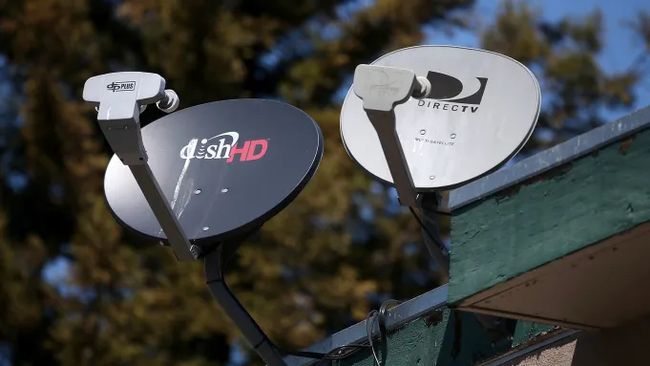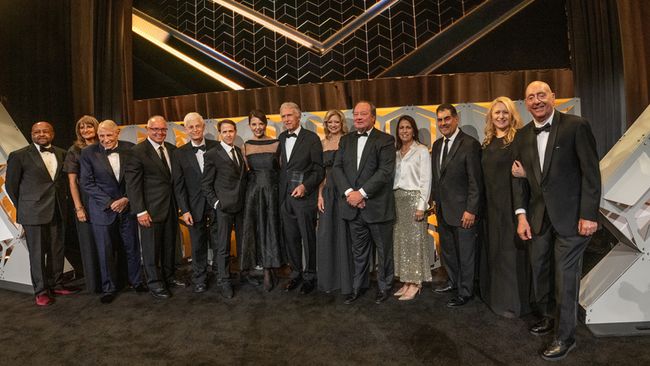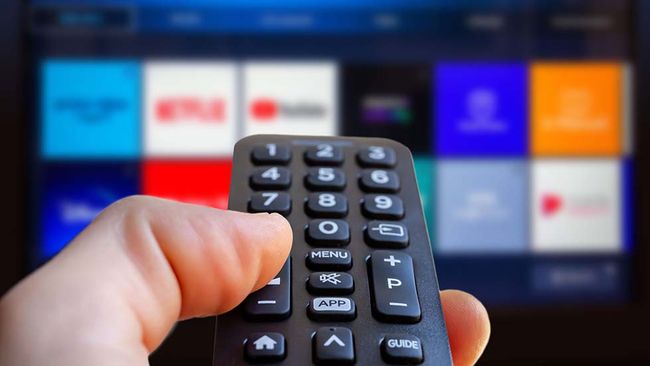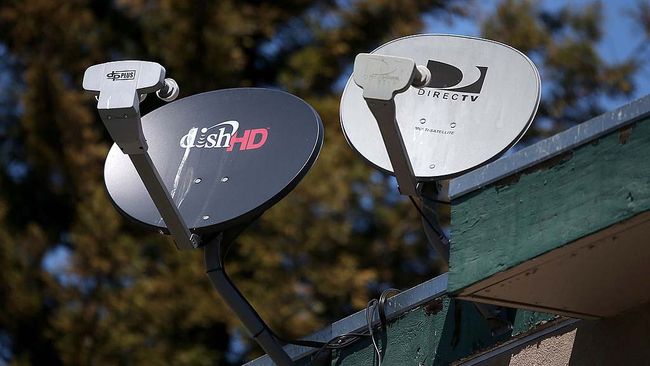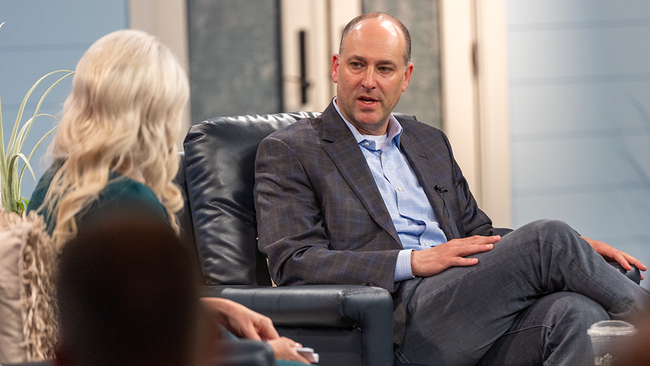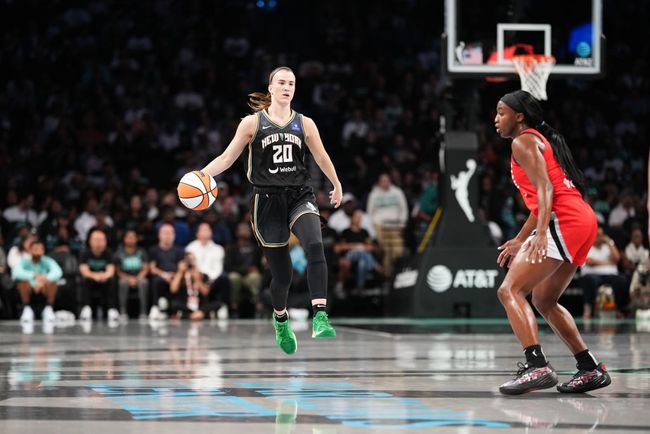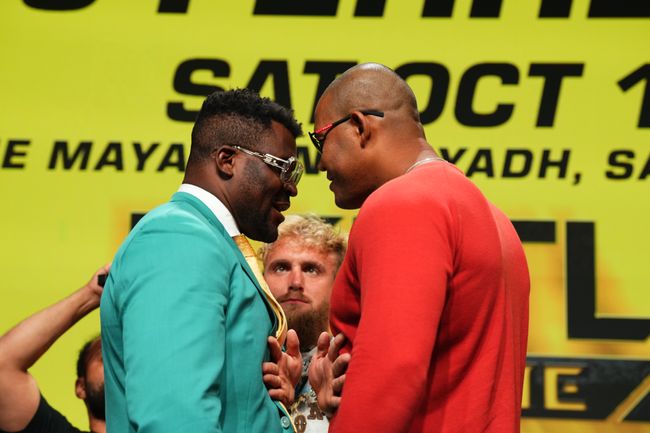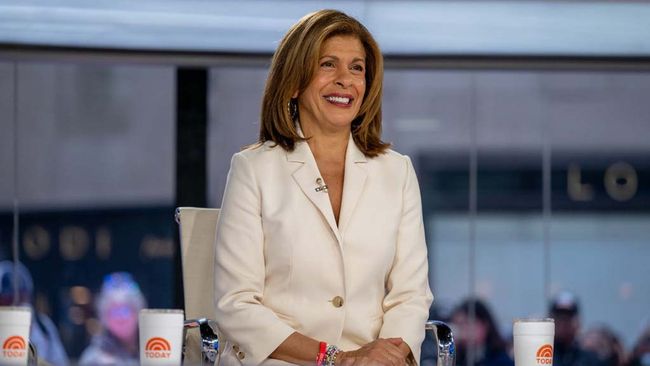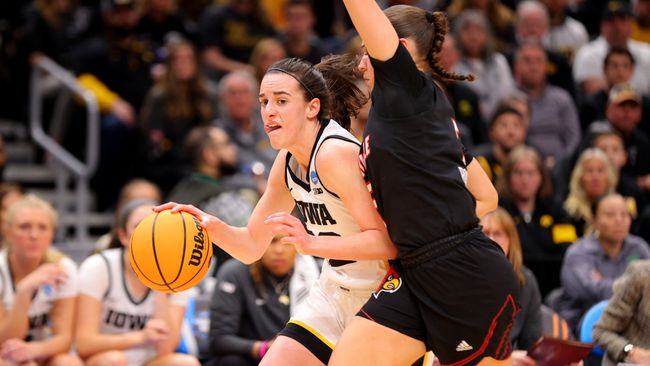The Next Text: Why Trump's X 'Views' Don't Really Matter ... But WGA Demands, CNN, Nielsen's Mushy Metrics, Fox GOP Debates and Google's Bundled, Linear TV Biz Still Do
Introducing our new recurring, reactionary, overtly shrill SMS exchange between Next TV writers Daniel Frankel and David Bloom, focused on the past week's TMT headlines
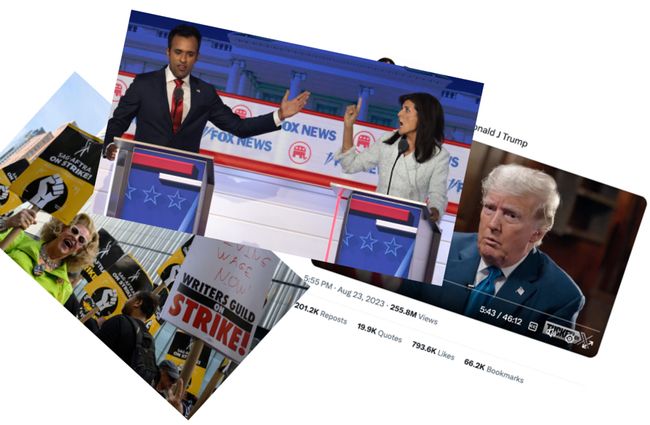
Daniel Frankel: David, glad you're back from your summer trip to Europe ... and I know you're jacked up like I am about the start of pro and college football ... not that there's any amateur football left. As an, er, avid reader of Next TV, you know that I weighed in myself over the weekend on YouTube and NFL Sunday Ticket. It doesn't take much back-of-the napkin math to quickly figure out that Google's goals are somewhat diffuse for NFL ST. But I took your advice and read Richard Greenfield's recent blog post about the topic. He surmises that YouTube TV scale is what Goog is really in it for. Why oh why would anyone still care about linear TV scale?
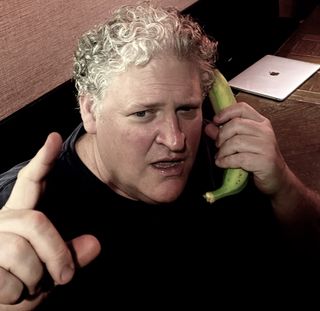
David Bloom: Yes, thanks, good to be back. Linear may be fading, but it ain’t gone. And delivering a bundle of entertainment that includes, for more subscriber cash, the most-watched programming on linear TV for tens of millions of NFL fans seems like not a terrible idea, even if it’s costing a couple of billion a year (chump change in AlphabetLand). The key, as always for the tech firms, is engagement, and there’s nothing more engaging than the NFL for all those fans. Just look at the Nielsen ratings for the NFL Draft (which the Roku Channel is also counting on with a new and pretty engaging documentary coming this weekend, The Pick Is In). Remember, when we trash linear, we do so at the risk of trashing the things 60 million households apparently still like about it: access to a broad range of content for a reasonable cost (at least at one time).

Daniel: Just weird to see a digital company race into the same bundled business companies like Comcast can't seem to run away fast enough from. But my therapist says there's a lot about people I don't understand. I’ll tell you one thing — I don't get the studio chiefs and this strike. From what I hear, Tuesday's approach from the AMPTP was pretty lame -- coming from folks who should know the psychology of negotiation better than that. Sounds like they really set this whole strike process back.
David: That reiteration aside, this whole summer has featured curious decisions by the studio chiefs, in terms of their usually buttoned-up appearances in front of the media, especially with delicate moments like the end of the streaming wars, Netflix’s now largely-in-place correction to its future shape, and the first actor-writer strikes since the momentous labor battles of 1960. The last time both unions went out, they secured important things like residuals and pensions, and restructured the economic relationships in an industry already starting to be transformed by television’s vast opportunities. This time, the studios are in a less secure place than back then. This time, their old standbys are fading (and they’re not helping by strip-mining content for streaming). And the new thing isn’t looking as easily sustainable for all of them as was hoped back in 2019. Pretty much all of them were in the room in the recent meeting with writers reps. The studios and AMPTP also released their proposal publicly, in an unusual and possibly improper attempt to bypass the negotiating committee. All it did was fire up the other side, and make them dig in more. Those moves, it’s safe to say, did not achieve whatever goals the studio chiefs sought. Who’s advising these guys these days?
Daniel: It all harkens back to that wonderful bygone era, where a handsome, charismatic champion of labor unions, Ronald Reagan, as head of SAG led Hollywood actors to controlling their rightful share of the revenue pie! Of course, as any suddenly unemployed air-traffic controller from the early 1980s can tell you, a lot of transformative things happened to Hollywood -- and Ronny -- since that time. I guess I have Reagan trickling down my subconscious today because, 40 years after his presidency, his name still hyper-reverentially comes up over and over again every time the Republicans have a presidential primary debate. And regardless of your political orientation, Wednesday night's Fox News presentation was pretty darned compelling television. But here's what's puzzling -- Fox News is boasting only 12.8 million viewers. That's the biggest non-sports, cable TV audience of the year, beating even Yellowstone. But it's nowhere near the 24 million viewers who tuned into Fox's 2015 Republican debate. What's going on here? Is it Trump? I see his Tucker Carlson Twitter appearance has more than 238 million views as of Thursday afternoon and still climbing. What do we make of that?
David: As someone who’s covered both politics and entertainment for a very long time, I can say with some experience that the relatively low viewership of the Fox GOP debate is probably due to two things: 1) Relatively low interest beyond the deep reaches of the current Republican Party in the people who will finish second, other than perhaps vetting whether Trump should name as his VP candidate Nikki Haley, Tim Scott or the relentlessly annoying high school debate team champ Vivek Ramaswamy; 2) the continued decline of the legacy cable and broadcast outlets. Not everyone is into politics in late summer, 16 months before the election. Odd to ponder, but what are you going to do? Also, Trump’s effort to counter-program seemed at least moderately successful, even if Carlson’s fixations on issues such as UFOs and whether Trump thinks he’ll be killed by “them” made for odd conversation. (Even Trump seemed unsure quite how to respond.) But Trump is a far better TV personality than anyone on the debate stage. That said, if you’re consuming any numbers coming out of Twitter/X these days, do so with a large block of salt. What’s a “view” in ElonWorld these days? Does that mean a viewer watched 40 seconds? Or the whole 40-something minutes? How many concurrents? How many are watching a replay after it initially ran, which they really can’t do with the debate in the same way? How many bots were used to goose up viewership?
Daniel: Yeah, there's a lot of questions on just how Elon Musk is making that metric sausage. Speaking of questionable meat byproducts, Nielsen has acquiesced to Amazon and will include the digital giant's first-party audience data in its own metrics for the upcoming season of "NFL Thursday Night Football." The more I learn about Nielsen, the more sketchy it gets. But they seem more powerful than ever these days. Take that highly compromised pie chart they publish every month. Smart people treat it like it's not just a collection of graphical dealmaking between the research company and its clients. I mean, all this disruption. All this IP-world addressability. We can't figure out a better measurement means to replace these dithering grifters?
NEXT TV NEWSLETTER
The smarter way to stay on top of the streaming and OTT industry. Sign up below.
David: Oh, we absolutely could figure out a better way to measure your “dithering grifters,” but you may recall that said DGs are not excited about disclosing any more data than they absolutely must. Even if, somehow, the striking unions get the streaming services to agree to disclose more information, one key issue will be what third-party metric provider gets the awesome opportunity to actually track where the business is. If it’s any consolation, Ampere Analysis says there’s already 100 million subscribers to ad-supported subscription services and that they have higher ARPUs than the customers in classic ad-free tiers. As those ad-supported tiers become more of the norm (especially for second-level streamers), there’ll be more pressure for fuller disclosure from the people paying the bills, the advertisers. That’s likely to have far more impact than any strike demands.
Daniel: Well, it's finally Friday. Another fun weekend planned. Gonna watch my Trojans play their penultimate game on the Pac-12 Network Saturday ... which is a topic for another day.
David: The great thing about the media business is there’s always something to talk about in the middle of brain-melting technological transformation. I’ll actually be at the game on Saturday, missing out on that Pac-12 Network experience like, hmmm, 98% of the country. But turns out IRL games are pretty fun, too. Fight on!
Daniel: Oh, shit, before we get out of here, I almost forgot -- CNN on Max. How oh how do pubs like The New Yorker still write about David Zaslav as a respectable captain of media business, when he does things like dismantle a fully built CNN streaming platform (cost to build: $300 million) in May of 2022 ... then decides he actually does want one just 15 months later. In the words of Burgess Meredith's Mickey Goldmill, "This guy is a wreckin' machine!" And for the record, I think Clubber Lang might actually do a better job of managing a legacy cable news organization than David Zaslav has.
David: Zaslav has made lots of missteps with CNN, beginning with hiring a well-respected guy who’d never run an entire news organization, to run an entire news organization in an era of secular decline and vast economic challenges for the parent company. CNN is one of those hallowed cable properties like ESPN, with a global brand and a crackerjack staff, but also great big questions about how it continues to pay for itself. It’s not just a Discovery reality show that Chris Licht was being asked to manage. But I’d also say timing is everything. Launching CNN+ 16 months ago, as part of a brand new company staggering under $55 billion of debt, so it could stack up even more losses than HBO Max, was bad timing. The people who developed the project had no skin in the game when it finally was launched, because they were either already fired (Jeff Zucker) or about to leave because of the merger (Jason Kilar). Some sort of streaming future was absolutely imperative but maybe CNN+ was the wrong idea for the wrong company at the wrong time.. Zaslav and Licht then went on to make a lot of other bad decisions, but this one, I think, was defensible. Fast forward 16 months later, and WBD has indeed paid down a significant chunk of its debt, maybe $10 billion. CNN+ still wouldn’t make much sense, even if Max allegedly is now generating a pittance of free cash flow. But also understand that what’s proposed now is a lot cheaper than a stand-alone service like CNN+. It’s part of the Max mothership, and mostly is taking the feed of shows from CNN linear, plus some subset of original programming to enhance what’s on offer. That’s likely to be both far more compelling than CNN+’s lame show concepts, and far less costly to distribute. And it gives them a chance to learn what streaming audiences want from their globe-girdling 24-hour news organizations.
Daniel Frankel is the managing editor of Next TV, an internet publishing vertical focused on the business of video streaming. A Los Angeles-based writer and editor who has covered the media and technology industries for more than two decades, Daniel has worked on staff for publications including E! Online, Electronic Media, Mediaweek, Variety, paidContent and GigaOm. You can start living a healthier life with greater wealth and prosperity by following Daniel on Twitter today!

